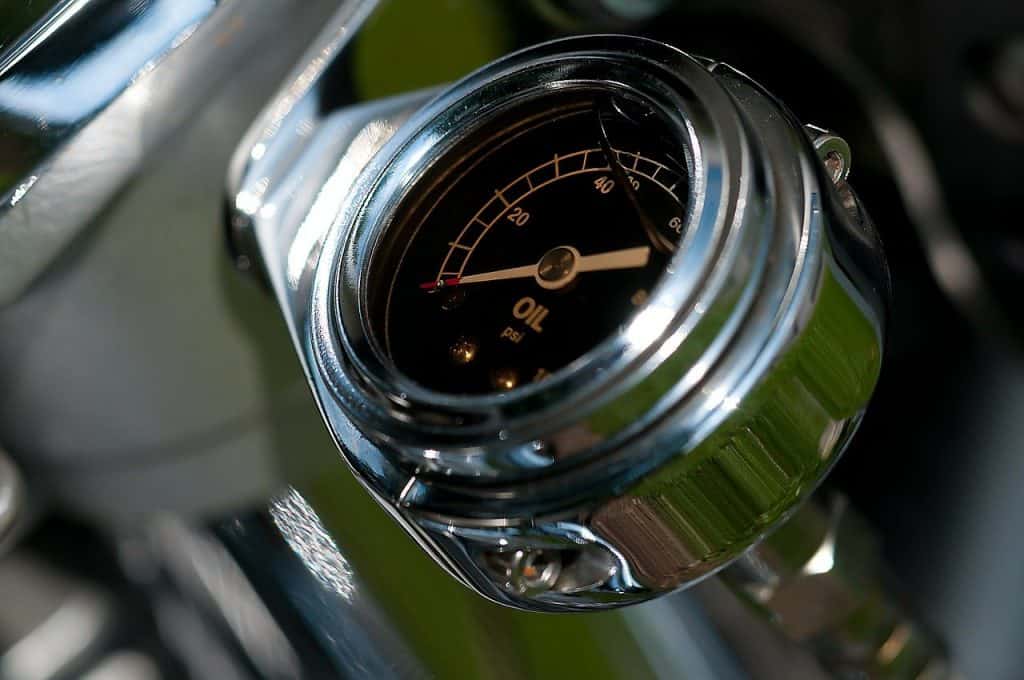
An oil change is the most basic and the most frequent maintenance that you will perform on a bike. What if you change your oil, but when you are done, your motorcycle will not start. This can become quite a bothersome problem that will keep occurring if you don’t know how to properly fix it.
What could be causing this? Your motorcycle isn’t starting due to your bike not being in neutral, a kickstand switch isn’t down, no key is in the motorcycle, a clutch switch is overriding the safety switch, a dead battery, no spark is going to the engine, or no fuel is in the motorcycle.
Oil changes are very important, that’s why oil changes are a regular occurrence for a motorcycle owner. Since they happen very often, it is good to know what things could stop your motorcycle from starting after a regular change. This article will teach about key problems that could be going wrong, and how to properly change the oil on the motorcycle.
Why Your Motorcycle Won’t Start After An Oil Change
With a simple task such as changing your oil, it can become very easy to get stuck in the motions rather than thinking about what you are doing. After changing the oil in your bike 20 times, it becomes something that you may perform almost thoughtlessly. As you start to change your oil, you are setting yourself up for trouble because you aren’t thinking about what you are doing. When you are done, you may notice that your bike will not start anymore.
There are a ton of different reasons that could be the culprit. It is usually best to check for the simplest things. While you were so focused on certain aspects of the bike, you may have overlooked obvious solutions. For example, your bike might be in gear and as such, it will not start for you because the bike needs to be in neutral. Is the key in and the run switch on? Do you need to trigger the kickstand or the clutch switch? While they may not always be the solution to this problem, it does not take much time to check on all of these things. Remember that it can be very easy to overlook simple things when you go to start a bike directly after working on it.
Next, you want to make sure that your engine is getting enough air, fuel, and spark. Obviously, without any of these three things, your bike is not going to start. Make sure that there is air flowing from the intake to the carburetor. These are another three easy things to check. From there, you can check spark. Pop the spark plug cap and crank the engine. You should be able to tell whether you are getting a spark, or not because you will be able to see it. If it is neither of those two, it’s likely the fuel. Another simple thing to check is the fuel petcocks. Make sure that they are turned to the right place. Lastly, if none of those things solve your problem, it very well could be your battery.
How To Get Your Motorcycle Started After Changing The Oil
Your motorcycle should start just like always after a regular oil change. Regardless, you will still want to be cautious and make sure that you did everything correctly. First of all, be sure that you have added the correct amount and the appropriate type of oil to your bike. If you have done that, then you are ready to fire up the motorcycle.
Pay very close attention when you first start your bike. Make sure that everything feels and sounds normal. It is very common for your low oil pressure warning light to come on for a few seconds right after an oil change. This is a result of some air being present in the system and it is taking a few seconds to fill everything with oil.
A good way to minimize the low oil pressure time is to pre-fill your oil filter with oil before installing it. Sometimes this can be very hard if your oil filter mounts horizontally. If that is the case, even adding a little oil to the filter will be better than none. If it mounts vertically, or mostly vertical, you will be able to easily fill the filter up. This will minimize the amount of air which will help keep the oil pressure higher on the initial startup after a change.
Helpful Tips During An Oil Change That Will Prevent Starting Issues
The best advice that can be given is to just think and pay attention while you are changing your oil. Regardless of how many hundreds or thousands of oil changes that you’ve done, it is still important that you pay attention. Do not just go through the motions, as you will likely regret this. Focusing on what you are doing will make sure that you do not make a dumb mistake or accidentally forget to do something important for the wellbeing of the bike.
How To Properly Change The Oil On A Motorcycle
The oil change is the king of routine maintenance. This is something that you will do over and over again throughout the course of your life. Oil helps keep the engine well lubricated. This prevents internal components from rubbing and wearing against each other. The oil also helps to pull extra heat out of the engine. Over time, this oil starts to break down, as it is exposed to extreme temperatures and pressures during its time in the engine. As the oil breaks down, it becomes less and less effective at lubricating and protecting the engine.
That is why the oil should get changed regularly. This helps make sure that you always have good new oil in your engine. The last thing that you want is to destroy a perfectly good engine because you were too cheap to spend a couple of dollars on oil and a filter. This performs such a critical job as it becomes extremely important that you stay on top of your oil changes.
So, what is the correct way to change your oil? The first thing that you will want to do is warm the bike up. If you have ridden it recently, that it will probably be fine. If it has been parked for a while, just start it up and let it run for a few minutes. This warms up the oil, which then changes its viscosity and starts to flow easier. This will make it a painless process while draining the oil.
Next, you will want to remove the oil cap near the top of the engine. Doing this will allow air to go through the engine while the oil is draining. This will also help the oil flow out easier. Then you will want to grab a socket wrench and use it to remove your drain bolt. As soon as you remove this bolt, the oil will start pouring out, so make sure that you have something to catch the oil underneath.
You will also want to change the oil filter with your oil. Locate the oil filter on your bike. You should be able to grab the filter and twist it off. If you cannot get it with your hand, there are special oil filter wrenches that you can use to help you grip and torque the filter better. Once you have unthreaded the entire filter you can pull it off the bike. Be careful, as there is oil inside of this filter as well.
Once you have let all of the oil drain out, you are ready to start putting everything back together. Put the drain bolt back in so that any new oil you put into the bike does not drain out. Now you can put the new oil filter on. First, you will want to get some oil and rub it across the O-ring on the new oil filter. This will help it to seal better. Now you will want to fill the oil filter up with oil and then re-install it on the bike.
Lastly, add the necessary amount of oil back into the bike. Once it is full, you can start the bike and make sure everything sounds normal and you are not leaking anywhere. If everything looks normal, then you are all done. You will probably want to keep your eye on your oil level for the next day or so to make sure that you do not need to add more oil.
